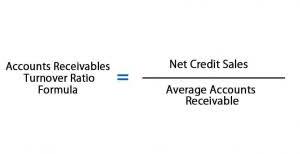How To Do A Vertical Analysis Of A Balance Sheet
Content

They can use them internally to examine issues such as employee performance, the efficiency of operations and credit policies. They can use them externally to examine potential investments and the creditworthiness of borrowers, amongst other things.
Databricks extends vertical industry reach with analytics libraries for financial services – SiliconANGLE News
Databricks extends vertical industry reach with analytics libraries for financial services.
Posted: Tue, 15 Feb 2022 15:00:28 GMT [source]
For example, when a vertical analysis is done on an income statement, it will show the top-line sales number as 100%, and every other account will show as a percentage of the total sales number. Common-size financial statements often incorporate comparative financial statements that include columns comparing each line item to a previously reported period. Vertical analysis is one of the easiest methods for the analysis of financial statements. Vertical analysis includes the presentation of each item of a financial statement as a percentage of the base item. A column is added in the financial statement, which shows the relative size of each item. Vertical analysis simplifies the correlation between single items on a balance sheet and the bottom line, as they are expressed in a percentage.
How Do You Calculate Vertical Analysis Of A Balance Sheet?
In vertical analysis, each item in a financial statement is expressed as a percentage of some base item. When analyzing a balance sheet vertically, all accounts are listed as a percentage of total assets. Vertical analysis, also known as common-size analysis, is particularly useful for comparing information among companies of different sizes. Managers can also perform vertical analysis of a series of balance sheets to see how account balances change over time. To illustrate horizontal analysis, let’s assume that a base year is five years earlier. All of the amounts on the balance sheets and the income statements will be expressed as a percentage of the base year amounts.

In that, we can easily understand that the total expenses gradually increased from 43% to 52%, and the net income got reduced from 1st year to 2nd year. In the 3rd year, the COGS got decreased when compared to the previous years, and the income got increased. Another powerful application of a vertical analysis is to compare two or more companies of different sizes. It can be hard to compare the balance sheet of a $1 billion company with that of a $100 billion company.
How Vertical Analysis Works
By using vertical analysis, a business can quickly identify strengths, weaknesses, and trends. For example, a company might spot a trend that shows the percentage of accounts receivable on the rise while the percentage of cash is on the wane. Analyzing an income statement in the same way allows the decision-makers at a company to pinpoint exactly how each dollar is distributed among costs and expenses, yielding a full financial picture. Looking at the raw data on a financial statement can be relatively meaningless without some sort of benchmark to which the numbers can be compared. Vertical analysis solves this problem by relating all items on a balance sheet to a single item, forming what is known as a common-size balance sheet. Common-size balance sheets are easily compared to the statements of other companies as well as to older sheets from within one company.
- Liquidity Of The OrganizationLiquidity shows the ease of converting the assets or the securities of the company into the cash.
- First, we should review the income statements as they’re presented in dollar terms.
- For example, the management may consider shutting down a particular unit if the profit per unit falls below a particular threshold percentage.
- Vertical analysis helps the accountant to ascertain the relative proportions of the balances of each account.
- You use total liabilities to compare all liabilities and total equity to compare all equity accounts.
For instance, on the Income Statement, all the accounts are expressed as a percentage of sales . The use of percentages converts a company’s dollar amounts on its financial statements into values that can be compared to other companies whose dollar amounts may be different. I do not think a vertical analysis of a Statement of Cash Flows would be meaningful. A vertical common-size financial statement covers one year’s operating results and expresses each component as a percentage of a total. A Statement of Cash Flows presents net cash provided by operating, investing, and financing activities and also the net increase in cash, cash equivalents, and restricted cash that is the sum of the three activities. Any vertical analysis would be done by simply dividing each activity’s net cash flow by the total net increase or decrease in cash. Such a technique also helps in identifying where the company has put the resources.
Vertical Analysis Definition
Using actual dollar amounts would be ineffective when analyzing an entire industry, but the common-sized percentages of the vertical analysis solve that problem and make industry comparison possible. Vertical analysis makes it much easier to compare the financial statements of one company with another, and across industries. Each item is represented as a percentage of a single larger item in the vertical analysis method of analyzing financial statements. In terms of vertical analysis on income statements, all of the different items are represented as a proportion of the total sales. That means that the total sales amount is automatically represented as 100.
However, given its lack of standard benchmark, this method finds limited use in the decision making of most of the companies. Vertical analysis is said to get its name from the up and down motion of your eyes as you scan the common-size financial statements during the analysis process. Most often, vertical analysis is used by management to find changes or variations in financial statement items of importance like individual asset accounts or asset groups. Horizontal AnalysisHorizontal analysis interprets the change in financial statements over two or more accounting periods based on the historical data. It denotes the percentage change in the same line item of the next accounting period compared to the value of the baseline accounting period.
Example Of Vertical Analysis Of A Balance Sheet
ABC Company’s income statement and vertical analysis demonstrate the value of using common-sized financial statements to better understand the composition of a financial statement. It also shows how a vertical analysis can be very effective in understanding key trends over time.

If cash is $8,000 then it will be presented as 2%($8,000 divided by $400,000). If the accounts payable are $88,000 they will be restated as 22% ($88,000 divided by $400,000). If owner’s equity is $240,000 it will be shown as 60% ($240,000 divided by $400,000). The vertical analysis of the balance sheet will result in a common-size balance sheet. The percentages on a common-size balance sheet allow you to compare a small company’s balance sheets to that of a very large company’s balance sheet.
The baseline acts as a peg for the other figures while calculating percentages. For example, in this illustration, the year 2012 is chosen as a representative year of the firm’s activity and is therefore chosen as the base. So, we can say that vertical analysis is a good tool to know what is happening in the financial statements. But, it can’t really answer “Why.” Like, in the above example we know cost is a major reason for the drop in the profits. But, we can’t be sure if the costs have actually risen, or the management has cut the prices of the product.
What Is The Meaning Of Moratorium Period?
The Financial StatementsFinancial statements are written reports prepared by a company’s management to present the company’s financial affairs over a given period . The following example shows ABC Company’s income statement over a three-year period. There are many roles where it is important to know how to understand and analyze financial documents. For example, accountants, financial advisors, investment bankers, managers and executives all need to know how to analyze important financial documents. Knowing what a vertical analysis is and how to use vertical analysis in the workplace can help you prepare for such roles. It can also help you better understand the meaning of the numbers in financial documents in your personal life. In this article, we discuss what vertical analysis is and how vertical analysis works, with examples.
ang cute ng vertical analysis pati utak ko napa vertical din ☺️
— ᵠ • 𝒂𝒏𝒔𝒊 (@yogirlcessy) February 16, 2021
QuickBooks Online is the browser-based version of the popular desktop accounting application. It has extensive reporting functions, multi-user plans and an intuitive interface. Accounting Accounting software helps manage payable and receivable accounts, general ledgers, payroll and other accounting activities. In our sample Balance Sheet, we want to determine the percentage or portion a line item is of the entire category. To calculate 2014, we DO NOT go back to the baseline to do the calculations; instead, 2013 becomes the new baseline so that we can see percentage growth from year-to-year. In a Horizontal Analysis, we state both the dollar amount of change and the percentage of change, because either one alone might be misleading.
Assets and liabilities (accrued liabilities, taxes payable, short-term debt, and long-term debt) can be analyzed using the vertical analysis method. A vertical analysis is defined as the process of looking at financial statement lines when compared to a base figure or amount.
Therefore, I do not think you need to worry about vertical analysis of a cash flow statement for the CMA exams. Under the “Total Stockholders’ Equity” line item, ensure there is a line item that reads “Total Liabilities and Stockholders’ Equity”. Double-check that that the total of liabilities and stockholders’ equity equals total assets and write “100%” next to the line item total. For example, if the base amount is gross sales of $50,000, and the analysis amount is selling expenses of $5000. Many industries use vertical analysis to measure whether there is an improvement or setback in the performance.
Start Your Business
Dividing each expense item in the income statement of a given year by net sales to identify expense items that rise more quickly or more slowly than a change in sales. Nony August 27, 2011 Well now, I am not a math wizard nor am I that good in accounting, but based on this article I think that I could learn how to do a vertical analysis. Mammmood August 28, 2011 @nony – A pie chart would show you a snapshot in time.
Compare your company results to the baseline and note any significant differences. In addition to industry baselines, compare your current common-size balance statement with previous years and note significant growth or decline in any accounts. If your company number is within 10% of the expected number, it is typically considered within range. A vertical analysis is a process of analyzing financial statements as a percentage of a total base item.
However, I think that most applications of vertical financial analysis would be for the purpose of making comparisons with other financial periods. Note that the line-items are a condensed Balance Sheet and that the amounts are shown as dollar amounts and as percentages and the first year is established as a baseline. Ratio Analysis – analyzes relationships between line items based on a company’s financial information. Business owners can use company financial analysis both internally and externally.
- Comparative statements may be prepared to increase the usefulness of the analysis.
- The financial statements are key to both financial modeling and accounting.
- This type of analysis enables the performance comparison with other firms in the same industry.
- From the analysis made, it can be concluded that the percentage of total liabilities had decreased in the year 2008 from the year 2007.
- Peggy James is a CPA with over 9 years of experience in accounting and finance, including corporate, nonprofit, and personal finance environments.
It uses a base figure for comparison and works out each transaction recorded in your books as a percentage of that figure. This helps you compare transactions to one another while also understanding each transaction in relation to the bigger picture, rather than simply in isolation. Vertical analysis in accounting is sometimes used in conjunction with horizontal analysis to get a broader view of your company accounts. A type of financial analysis involving income statements and balance sheets.